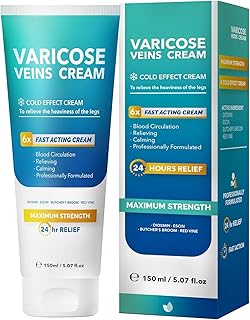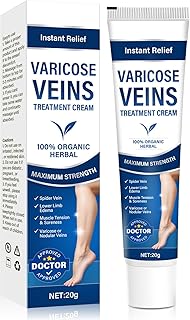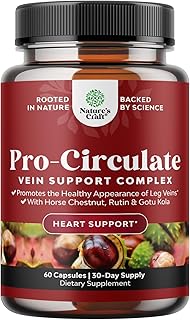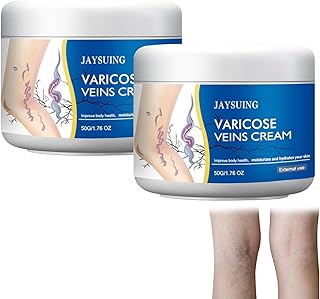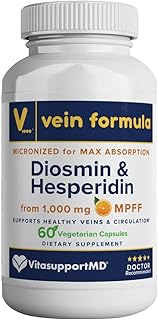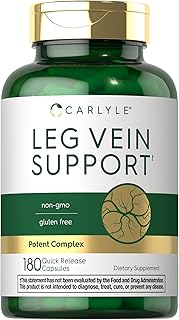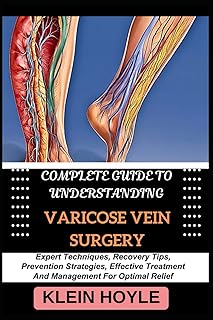|
Radiofrequency Ablation: A Minimally Invasive Treatment Option For Great Saphenous Vein Issues
Radiofrequency ablation is a groundbreaking medical procedure that has revolutionized the treatment of varicose veins. One of the most common and effective methods of treating varicose veins, radiofrequency ablation is particularly effective in targeting the great saphenous vein. This procedure utilizes thermal energy to close off the diseased vein, providing patients with relief from the pain, swelling, and aesthetic concerns associated with varicose veins. With its minimally invasive nature and high success rate, radiofrequency ablation is quickly becoming the preferred choice for both patients and medical professionals in the treatment of varicose veins. Explore related products
$24.99
$19.88
$9.86
$9.99 $15.99
$11.99 $13.99
$49.95 What You'll Learn
Radiofrequency ablation (RFA) is a minimally invasive procedure used to treat issues with the great saphenous vein. This procedure is commonly used to alleviate symptoms associated with varicose veins and chronic venous insufficiency. RFA works by using high-frequency electrical energy to create heat and destroy the affected vein. During the RFA procedure, the patient is usually given local anesthesia. A small incision is made near the affected vein, and a thin catheter is inserted into the vein. The catheter emits radiofrequency energy, which generates heat and causes the collagen fibers in the vein wall to shrink and the vein to close off. This process is known as thermal ablation. The doctor carefully guides the catheter along the length of the vein, treating the entire affected area. The procedure is typically performed under ultrasound guidance to ensure accurate placement of the catheter. The heat generated by the radiofrequency energy also helps to seal the vein, preventing blood flow and rerouting it to healthier veins nearby. The benefits of radiofrequency ablation for treating great saphenous vein issues are numerous. The procedure is minimally invasive, requiring only a small incision, which results in less pain, scarring, and a faster recovery compared to traditional vein stripping surgery. RFA can be performed as an outpatient procedure, allowing patients to return home on the same day. Furthermore, RFA has a high success rate in reducing symptoms associated with varicose veins and chronic venous insufficiency. Patients often experience significant improvement in pain, swelling, and the appearance of their legs. Numerous studies have demonstrated the efficacy of radiofrequency ablation. For example, a study published in the Journal of Vascular Surgery found that RFA provided equivalent results to traditional vein stripping surgery in terms of symptom relief and patient satisfaction. Another study published in Phlebology showed that RFA was highly effective in closing the great saphenous vein, with a success rate of over 95%. Patients who undergo radiofrequency ablation typically experience minimal downtime and can resume normal activities within a few days. However, it is important to follow the doctor's instructions regarding post-procedure care and to wear compression stockings to support the healing process. In conclusion, radiofrequency ablation is a highly effective and minimally invasive procedure for treating great saphenous vein issues. By using high-frequency energy to generate heat, RFA closes off the affected vein and reroutes blood flow to healthier veins. This procedure offers numerous benefits, including minimal scarring, faster recovery, and long-term symptom relief. If you are experiencing symptoms associated with varicose veins or chronic venous insufficiency, radiofrequency ablation may be a suitable treatment option for you. Consult with a vascular specialist to determine the best course of action for your specific condition.
Exploring the Benefits of Pulsed Radiofrequency Ablation for Radiculopathy: An Innovative Treatment Approach You may want to see also
Radiofrequency ablation (RFA) is a minimally invasive procedure that has gained popularity as a treatment option for patients with great saphenous vein (GSV) insufficiency. It is an effective alternative to traditional surgical methods such as vein stripping and ligation. RFA involves the use of thermal energy to close off the diseased veins, thereby rerouting blood flow to healthier veins. There are several potential benefits of radiofrequency ablation for GSV treatment compared to other methods. Firstly, RFA is a minimally invasive procedure that can be performed on an outpatient basis, meaning that patients can go home on the same day as the procedure. This is in contrast to surgical methods which often require a hospital stay and a longer recovery time. Being an outpatient procedure, RFA allows patients to resume their daily activities relatively quickly, as there is less disruption to their normal routine. Secondly, radiofrequency ablation is associated with less pain and discomfort compared to traditional surgical methods. The use of thermal energy causes minimal trauma to the surrounding tissues, resulting in less postoperative pain. Studies have shown that patients who undergo RFA experience less pain, bruising, and swelling compared to those who undergo surgical procedures. This is particularly important for patients who may have a fear of surgery or who are unable to tolerate the pain associated with invasive procedures. Furthermore, RFA offers a faster and more efficient treatment option for GSV insufficiency. The procedure can typically be completed in less than an hour, whereas surgical methods may take several hours. This shorter treatment time is beneficial for both patients and healthcare providers, as it reduces the overall procedure time and allows for more efficient use of resources. Additionally, RFA has been found to have a high success rate in closing off the diseased veins, with many studies reporting success rates of over 95%. One of the key advantages of RFA is its ability to be performed under local anesthesia. This means that patients do not need to be put under general anesthesia, reducing the risks associated with sedation and minimizing recovery time. Patients are able to remain awake during the procedure, which may improve their overall comfort and reduce the need for postoperative pain medication. In summary, radiofrequency ablation offers several potential benefits for the treatment of great saphenous vein insufficiency compared to other methods. These include a minimally invasive approach, reduced postoperative pain and discomfort, faster treatment times, and the ability to be performed under local anesthesia. However, it is important to note that not all patients are suitable candidates for RFA, and individualized treatment plans should be developed in consultation with a vascular specialist.
Clinical Considerations for Elevated CPK Levels Following a Radiofrequency Ablation Procedure You may want to see also
Radiofrequency ablation (RFA) is a minimally invasive procedure used to treat varicose veins by closing off the diseased vein and redirecting blood flow to healthy veins. Although generally considered safe and effective, like any medical procedure, there are risks and potential complications associated with radiofrequency ablation for great saphenous vein treatment. One potential risk of RFA is thermal injury to surrounding tissues. During the procedure, radiofrequency energy is delivered to the vein using a catheter, causing heat to be generated and sealing off the vein. However, if the energy is not properly controlled or if the catheter is not positioned correctly, it can result in thermal injury to adjacent nerves, skin, or blood vessels. This can lead to pain, burns, or skin discoloration. Another potential complication is nerve injury. The great saphenous vein runs close to various nerves in the leg, and damage to these nerves can occur during the RFA procedure. This can lead to symptoms such as numbness, tingling, or weakness in the leg. In some cases, the nerve injury may be temporary and resolve over time, but in more severe cases, it can be permanent. In rare cases, deep vein thrombosis (DVT) can occur as a result of RFA. DVT is a blood clot that forms in a deep vein, usually in the leg. It can cause pain, swelling, and redness in the affected limb, and in severe cases, it can lead to a pulmonary embolism, a potentially life-threatening condition. The risk of DVT following RFA is low, but it is important to be aware of this potential complication. Infection is another potential risk of RFA. Although the procedure is performed under sterile conditions and antibiotics may be given before and after the procedure to reduce the risk of infection, it is still possible for an infection to occur at the site where the catheter was inserted. Signs of infection include redness, swelling, warmth, pain, or drainage from the site. Prompt medical attention should be sought if any signs of infection are present. To reduce the risks associated with RFA, it is important to choose a qualified and experienced interventional radiologist or vascular surgeon to perform the procedure. They will have the necessary skills and knowledge to minimize the risks and manage any complications that may arise. It is also important to follow all post-procedure instructions, such as wearing compression stockings, avoiding heavy lifting or strenuous exercise, and taking any prescribed medications to reduce the risk of complications. In summary, while radiofrequency ablation is generally considered safe and effective for treating great saphenous vein insufficiency, there are potential risks and complications associated with the procedure. These include thermal injury to surrounding tissues, nerve injury, deep vein thrombosis, and infection. Choosing a qualified practitioner and following all post-procedure instructions can help minimize these risks and ensure a successful outcome.
Relieving Pain Through Geniculate Radiofrequency Ablation: A Promising Treatment Option You may want to see also Explore related products
$21.49 $23.99
$9.99
$23.99
$16.99
$15.99
$21.99
Radiofrequency ablation (RFA) is a minimally invasive procedure used to treat varicose veins by closing off the damaged veins. One of the most commonly treated veins using RFA is the great saphenous vein. After the procedure, it is important for patients to understand the recovery process in order to anticipate how long it might take to return to their normal daily activities. The recovery process after RFA for great saphenous vein treatment can vary depending on several factors, including the individual patient and the extent of the vein damage. In general, however, most patients can expect to resume their normal activities within a short period of time. Immediately after the procedure, patients may experience some discomfort, swelling, and bruising around the treated area. These side effects are typically mild and can be managed with over-the-counter pain medication. The doctor may also recommend wearing compression stockings to help reduce swelling and improve blood flow. In the first few days following the procedure, it is important for patients to rest and avoid strenuous activities. This allows the body to heal and reduces the risk of complications. While rest is important, it is also beneficial for patients to engage in light activities, such as walking, to promote blood circulation. After about a week, most patients can return to their normal daily activities, including work and exercise. However, it is important to avoid activities that put excessive strain on the treated area, such as heavy lifting or intense aerobic exercises, for a few more weeks. The doctor will provide specific instructions based on the patient's individual case. It is worth noting that the recovery process can vary from patient to patient. Factors such as age, overall health, and any existing health conditions can impact the healing process. Some patients may experience a quicker recovery, while others may require more time. To ensure a successful recovery, it is important for patients to follow the doctor's instructions carefully. This may include wearing compression stockings, elevating the legs, and avoiding certain activities for a specified period of time. Regular follow-up appointments with the doctor will also be scheduled to monitor the progress and address any concerns. In conclusion, the recovery process after radiofrequency ablation for great saphenous vein treatment typically takes about a week for most patients to resume their normal daily activities. However, it is important to keep in mind that individual recovery times can vary. It is crucial for patients to follow the doctor's instructions and attend follow-up appointments to ensure a successful recovery. By doing so, patients can expect to experience long-term improvement in their varicose veins and overall quality of life.
A Step-by-Step Guide to DIY Radiofrequency Ablation in Wheeling: Providing Pain Relief at Home You may want to see also
Radiofrequency ablation (RFA) is a minimally invasive procedure used to treat great saphenous vein (GSV) issues such as varicose veins and chronic venous insufficiency. It involves the application of radiofrequency energy to heat and close the targeted vein, thereby redirecting blood flow to healthier veins. While RFA is a safe and effective treatment option for GSV issues, there are certain indications and criteria that make someone a good candidate for this procedure over other treatment options. Diagnosis of GSV issues: Before considering RFA, a proper diagnosis of GSV issues needs to be made. This typically involves a physical examination, medical history assessment, and diagnostic imaging such as ultrasound. RFA is generally recommended for patients with symptomatic varicose veins, including pain, swelling, and skin changes, or those who have chronic venous insufficiency. Proximity of the GSV to the skin surface: RFA is most effective when the targeted GSV is located close to the skin surface. This allows for better access and optimal delivery of the radiofrequency energy. If the GSV is located deep within the leg, other treatment options such as endovenous laser treatment (EVLT) or sclerotherapy may be more appropriate. Size of the GSV: The size of the GSV can also influence the choice of treatment. RFA is typically more suitable for larger, straighter veins, whereas smaller, tortuous veins may be better treated with alternative methods. A thorough evaluation of the GSV's size and shape is essential to determine the most appropriate treatment option for each individual case. Overall health and medical history: Patients considering RFA should have a relatively stable medical condition and not be at high risk for complications. Certain medical conditions such as bleeding disorders, active infections, or advanced peripheral artery disease may contraindicate the use of RFA. A comprehensive assessment of the patient's medical history, including any medications they are taking, is vital in determining their suitability for RFA. Desire for minimally invasive treatment: RFA is a minimally invasive procedure that offers several advantages over traditional surgery, such as faster recovery times, reduced pain, and minimal scarring. Patients who are seeking a less invasive treatment option for their GSV issues may be good candidates for RFA. However, it is important to discuss all available treatment options with a qualified healthcare professional to make an informed decision. It is worth noting that the suitability of RFA as a treatment option for GSV issues is determined on a case-by-case basis. Every patient is unique, and a thorough evaluation by a healthcare professional is essential in determining the most appropriate treatment option for each individual. In some cases, a combination of treatments may be recommended to achieve optimal results. In conclusion, there are several indications and criteria that make someone a good candidate for radiofrequency ablation over other treatment options for great saphenous vein issues. These include a diagnosis of GSV issues, proximity of the GSV to the skin surface, size of the GSV, overall health and medical history, and the patient's desire for a minimally invasive treatment. However, it is important to consult with a healthcare professional to determine the most suitable treatment option based on each individual's specific circumstances.
4 Top Questions About Radiofrequency Ablation for Afib Answered You may want to see also Frequently asked questions
What is radiofrequency ablation for the great saphenous vein?
Radiofrequency ablation is a minimally invasive procedure used to treat varicose veins, specifically the great saphenous vein. It involves using heat generated by radiofrequency energy to damage and close off the vein. This helps to redirect blood flow to healthier veins, relieving symptoms and improving circulation.
How is radiofrequency ablation performed?
During the procedure, a thin catheter is inserted into the affected vein under ultrasound guidance. Local anesthesia is administered to numb the area. Once the catheter is in place, radiofrequency energy is delivered through the catheter to heat and damage the vein wall. This causes the vein to collapse and seal shut. The procedure typically takes about 30-45 minutes and is done on an outpatient basis.
What are the benefits of radiofrequency ablation?
Radiofrequency ablation offers several benefits compared to traditional vein stripping surgery. It is a minimally invasive procedure, meaning it requires only a small incision and has a shorter recovery time. It is also associated with less pain and a lower risk of complications. Additionally, radiofrequency ablation has been found to be highly effective in treating varicose veins, with a high success rate and long-term results.
Is radiofrequency ablation painful?
While the procedure itself is generally well tolerated, some patients may experience mild discomfort or a sensation of heat during the radiofrequency ablation. However, local anesthesia is used to numb the area where the catheter is inserted, which helps to minimize any pain or discomfort. After the procedure, patients may experience some bruising, swelling, or tenderness, but this usually resolves within a few days.
What is the recovery time after radiofrequency ablation?
The recovery time after radiofrequency ablation is typically much shorter compared to traditional vein stripping surgery. Patients are usually able to resume normal activities within a day or two. However, it is recommended to avoid strenuous activities and heavy lifting for about a week to allow for proper healing. Patients are also advised to wear compression stockings for a period of time to promote healing and reduce the risk of complications.
Written by Reviewed by Explore related products
$17.19
$17.97
$8.95
$360
$8.99 $9.99
$19.95
$29.95
$19.99
$25
$42.72
$9.99
$9.99
Share this post Did this article help you? Yes No
It is awesome. Thank you for your feedback!
We are sorry. Plesae let us know what went wrong? Submit
We will update our content. Thank you for your feedback! 2 Comments
Kaylen Mcdonald
Jun 29, 2023 12:18 After years of dealing with painful varicose veins in my leg, I finally decided to try radiofrequency ablation for my great saphenous vein. Let me tell you, it was a game-changer! The procedure itself was surprisingly quick and the numbing medication really minimized any discomfort. The recovery was also much easier than I anticipated, with just a few days of minimal soreness. But the best part is that my leg looks and feels so much better now. The swelling is gone and the pain is significantly reduced. I am so grateful I found this treatment option!
Kaelyn Grimes
Jun 17, 2023 14:12 I recently had radiofrequency ablation done for my varicose veins, specifically for my great saphenous vein, and I couldn't be happier with the results. The procedure was quick and relatively painless, and I was able to walk out of the clinic right after. The recovery was also a breeze, with very minimal discomfort and bruising. It's been a few weeks now and my legs feel amazing - no more swelling or heaviness, and the unsightly bulging veins are gone! I highly recommend radiofrequency ablation for anyone suffering from varicose veins. (责任编辑:) |


